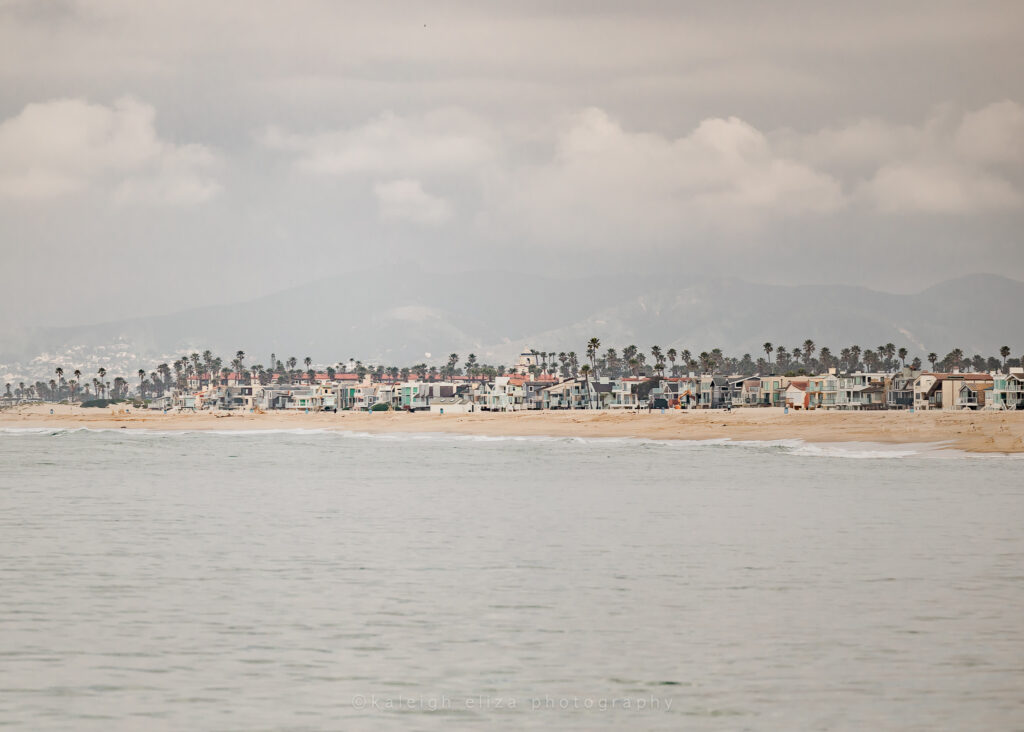
This information is intended to get you brainstorming on how to best approach family beach trips so everyone can be relaxed, safe, and having fun. I hope to help parents have an awareness of what to keep an eye out for so they can feel relaxed and have fun with their kids, instead of feeling anxious about not knowing how to handle a high-stress situation that could arise.
I am going to start this off by saying that I know that water-related accidents can be extremely anxiety-triggering and terrifying. My intention is never to stoke the fear in parents. Rather, I intend to share helpful tips that have calmed my own anxiety about keeping my children safe.
In this article, we will be talking about the following topics:
- What the best colors to wear to the beach are
- What a rip current is
- How to get out of a rip current
- Marine First Aid
- How to avoid a stingray sting
- How to treat a stingray sting
- And more general beach safety tips for families!
Let’s get into it…
[ Disclaimer: Nothing in this article is medical advice. I am not a medical professional and should not be treated as such. My intent is to share my personal knowledge of how I plan to handle certain situations regarding my children’s safety. Please use this information to spark your own brainstorm and curiosity, then continue your own research. ]
1. These are the best colors to wear at the beach:
Check out this swimsuit color test that Alive Solutions Inc. performed to show which colors are most visible underwater.
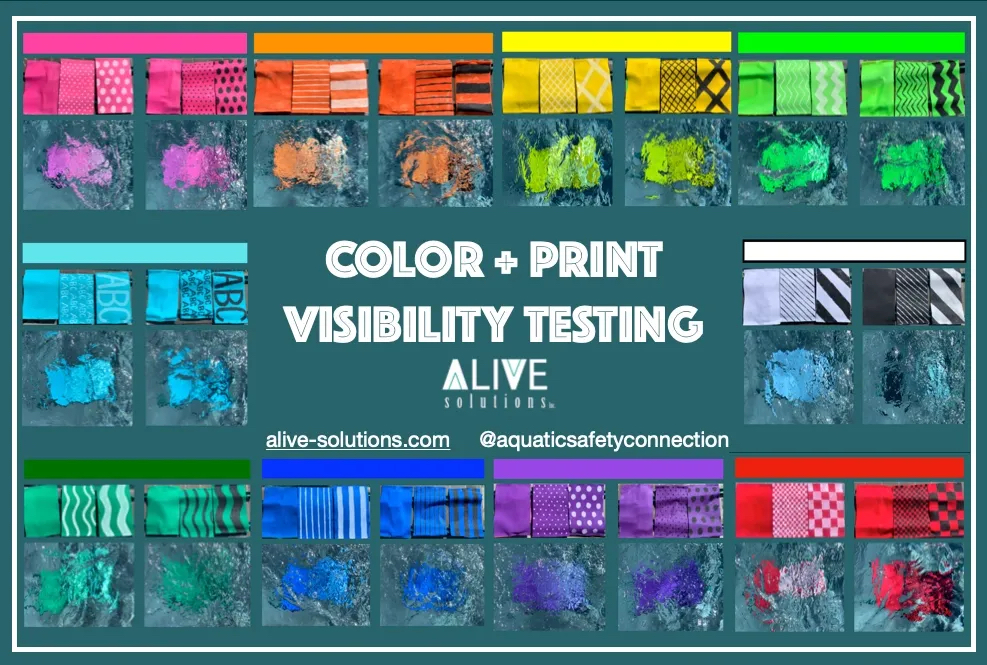
The general conclusion is this: Swimsuits with bright colors, neons, and limited patterns are the best for visibility under the water. Neutrals, blues, and aqua are the hardest colors to see underwater as they blend in with the color of the ocean or a pool. Here’s a couple rash guard options that we’ve used for years and love:
Head over to my Amazon Storefront to check out water safety items and much more!
Also, if you’re interested in shopping a fun gift list for your kids, check out my post: Outdoorsy Kid’s Gifts for Spring + Summer
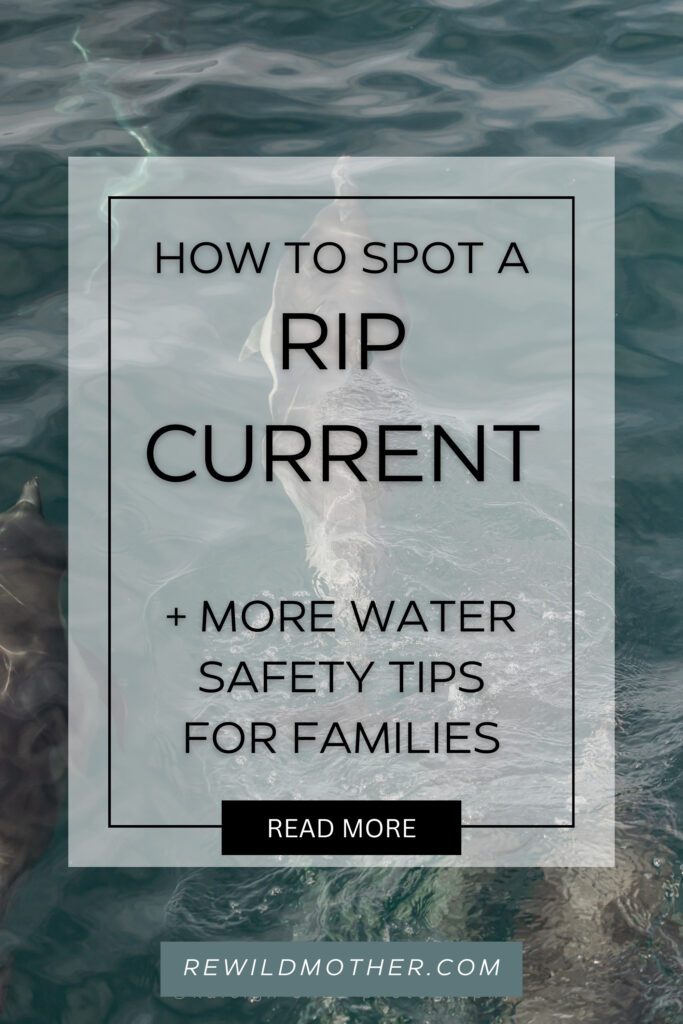
2. What is a rip current?
A rip current (also called a rip tide) is where the water from the shore rushes back out to sea. It is a section of ocean water, among the breaking waves, that has the potential to be extremely dangerous. Part of the reason that rip currents are so dangerous is because many people (who don’t know how to identify rip currents) may mistake the rip current for calm water. It is possible that the section of ocean that looks like the calmest place to enter the water is actually the rip current that has the ability to sweep a person out to sea.
How to identify a rip current:
When you’re standing on the beach looking at the ocean, notice where the breaking waves are. Look for a section of water in between the breaking waves that looks darker, more calm, and does not have breaking waves. That is the rip current. You may also notice traveling debris or water clouded by sand that has been disturbed off the ocean floor as the current rushes out to sea.
A great way to stay safe from rip currents is to choose to swim at a beach that has lifeguards. Upon arrival, you can talk with the lifeguard to ask what things you should be aware of, if there is a rip current that is active at that time, etc. From my experience, lifeguards are more than happy to help. When we make safe decisions in the water, we don’t put the lifeguards at risk that would be coming to save us.
What to do if you realize you’re caught in a rip current in the ocean:
If you notice that you are caught in a rip current (if you feel yourself being pulled out by the current towards deeper water) the very first thing to do is to stay calm and not panic. Don’t burn your energy by panicking.
Stay calm and take note of your surroundings:
- Is there a lifeguard that you can wave to for help?
- Can you see the shoreline? If yes, swim parallel to the shore when you feel the current getting weaker. Do not try to fight the rip current and swim directly to shore. It absolutely will be stronger than a person can swim. When you swim parallel to the shoreline, eventually you can exit the rip current (where the breaking waves are) and make your way back to shore by swimming with the waves.
For more information about rip currents, check out my recent article here. In the post below, I also go into detail about marine animal behaviors and how to avoid interactions.

Regarding life jackets in the ocean:
Throughout all my research I have seen it mentioned both ways many times: some sources say that life jackets are ok in the ocean and some do not recommend life jackets in the ocean because they can prohibit proper swimming. My personal opinion is that each person needs to evaluate the individual abilities of themselves and their children and make the best informed decision possible. If someone isn’t a strong swimmer, a life jacket could be the one thing keeping them alive if they are caught in a rip current. However, if they are a strong swimmer that enjoys playing in the waves, a life jacket could prohibit proper movement. Please take account of all of your personal considerations and proceed how you feel most comfortable and confident.

MORE GENERAL TIPS FOR BEACH AND OCEAN PLAY (ESPECIALLY FOR FAMILIES):
3. Keep a Marine First Aid Kit and know how to use it. Check out this kit that was created by SURVIVAL (a First Aid Kit company) and Aussie Big Wave Surfer, Mark Visser: SURVIVAL Ocean Warrior First Aid Kit (note: I would add tourniquets to this kit, as well as chest seals. Check my Amazon Storefront for these exact items.)
Here’s a few tips about Marine First Aid:
- Know how to perform CPR (on adults and children)
- Keep your first aid kit updated and stocked with the specific items you and your family need (make sure there’s tourniquets included. These would be used in larger wounds to stop the bleed and/or animal bites)
4. Don’t swim in the ocean during or after a storm. It is advised to wait a minimum of 72 hours after a storm in order to avoid any bacteria and toxic urban runoff that washed from the streets, through drainage canals, and to the ocean.
5. Upon arriving at the beach, I always take 1-2 minutes before setting up our spot to take account of our surroundings. This is a GREAT practice to get in the habit of when arriving to the beach (and anywhere else you go, too). I always take a walk around and think through the following questions:
- are there any people exhibiting unusual behavior?
- are there any marine animals nearby that we should make sure to give them their space? (ie. harbor seals and sea lions)
- is there any litter on the beach that we should clean up (so it can’t hurt the kids, other marine life, or make its way into the ocean)
- what does the tide look like: heavy waves, light waves, rip current, etc
- is there a lifeguard on duty? can we go talk with him/her to better understand the current beach conditions?
- and so on…
6. Do the stingray shuffle upon entering the water!
This is done by keeping your feet flat in the sand and sliding them forward as you enter the water. Doing this encourages any seafloor marine friends that could be underwater to move away from your feet. It is strongly advised not to enter the water by running or walking in a stomping motion, because doing so could plant your foot directly on a stingray and result in a painful sting.
Disclaimer: I am not giving medical advice. I am not a doctor and should not be listened to as if I am a medical professional. These are the steps that I would take if myself or my child were to get stung by a stingray. Proceed with your own judgment, intuition, and further research.
Ways to treat a stingray sting:
- Wash the wound out with fresh water or sea water
- Control the bleeding
- Remove debris, pieces of the stinger, and anything else that could be contaminating the wound.
- Soak in water to lessen the pain. A way to do this if you’re at the beach is to keep a large, thick plastic bag (like a heavy duty trash bag) and duct tape in your marine first aid kit (since the most common place for a stingray sting is on the foot and lower leg, it should fit in the bag). Fill the bag with sea water (or warm fresh water if you have access to it) and secure it on the leg with tape (DO NOT make this tight. It shouldn’t restrict blood flow at all and you should be able to slide your foot out easily. The tape is specifically for keeping the bag from dumping out. Make sure to hold the weight of the water in the bag with your hands instead of relying on the tape. Also be sure to have scissors in your first aid kit for rapid removal of this set up.)
- Upon arriving home, fully flush and clean out the wound with gentle soap and warm water. Again, remove any debris.
- Control bleeding and cover with clean dressings.
- Seek medical attention according to your own judgment.
7. Don’t bury kids in the sand close to the water. This may sound like an obvious tip but I’m always surprised how often I’ve seen parents burying their kids in the sand only a short distance away from the shoreline. Sand is HEAVY and extremely restrictive for movement of someone buried in it. Furthermore, large sneaker waves seemingly come out of nowhere and will carry the previous shoreline many feet inland without warning. When this happens, if a child is buried in the sand and cannot easily move, they will be held underwater. I have personally experienced large sneaker waves MANY times.
A sneaker wave is similar to a rogue wave that is extremely large and comes without warning. Rogue waves usually refer to massive waves out at sea and sneaker waves usually refer to large waves that crash on shore.
I will note – I never want to be super “doom and gloom” about all of the things that can go wrong at any given moment. Rather, I aim to approach safety from a very logical and factual point of view using personal stories and credible sources to back my advice up.
There absolutely is a way to navigate the outdoors lifestyle without being a “helicopter parent”. We can address the risks in front of us with our kids in a calm and informed perspective. A way that I like to do this is by talking through whatever risk I’m feeling nervous about with my kids (ages 2.5 and 7). I’ll say things like:
“I’m feeling nervous about this risk. Can we talk through it for a minute? What is your plan for ________?” (staying safe, climbing, staying steady, not falling, etc…)
or,
“I notice ____________. Let’s _____________.”For example: “I notice loose gravel as we’re going downhill. Let’s slow down and use steady feet so we don’t slide.”
When we talk through the situation, we teach our kids how we process and address risks, and we keep ourselves as calm as possible (instead of jumping into “BE CAREFUL!”)
I hope this list of water safety tips helped bring you awareness and a plan for what to do if you find yourself and your kids in an unplanned situation. Make sure you’re subscribed (below) and come hang out on IG @rewildmother
xx,
Kaleigh

Sources:
https://www.verywellhealth.com/how-to-treat-a-stingray-sting-1298267
Disclosure: Please assume that any / all of the links throughout this website are affiliate links. Shopping these links returns a commission to the site owner at no extra cost to the customer.
Rewild Mother / Kaleigh Eliza is a participant in the Amazon Affiliate LLC program where commissions are earned. Thank you so much to everyone who shops my links and directly supports my mama-run small business!
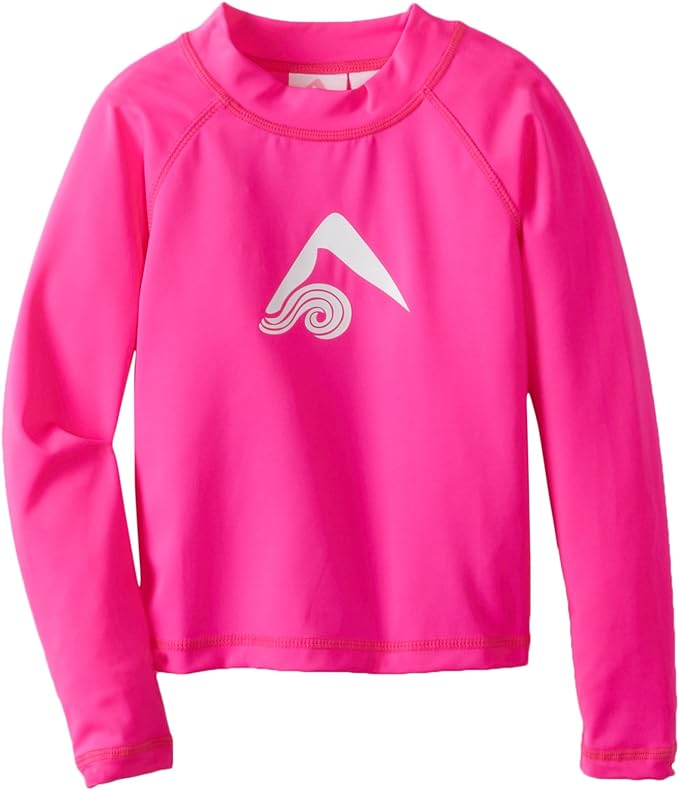

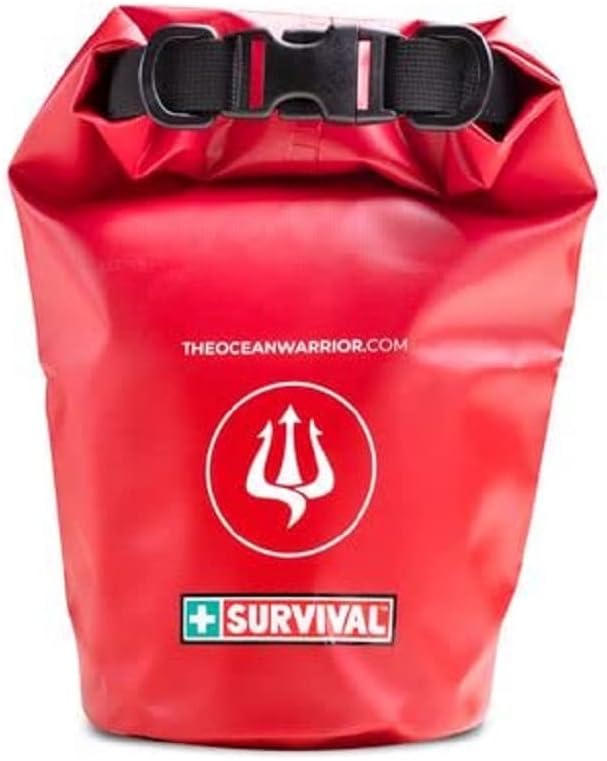
Hey there! I wanted to take a moment to let you know how much I enjoyed this blog post. Your insights were incredibly helpful and thought-provoking. It’s clear that you put a lot of effort into your writing. Thank you for sharing your expertise with us. Looking forward to your next post!
Hi! Thank you SO much for this kind response! I really appreciate it. I always hope that my posts are helpful and valuable to readers, so I love hearing feedback like this. -Kaleigh
Great article! I really appreciate the clear and detailed insights you’ve provided on this topic. It’s always refreshing to read content that breaks things down so well, making it easy for readers to grasp even complex ideas. I also found the practical tips you’ve shared to be very helpful. Looking forward to more informative posts like this! Keep up the good work! YouTube Downloader Online